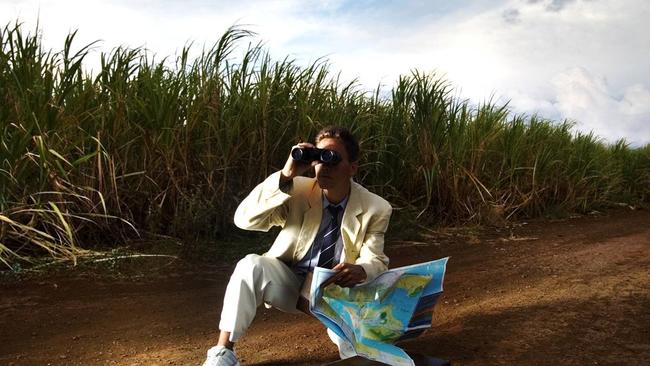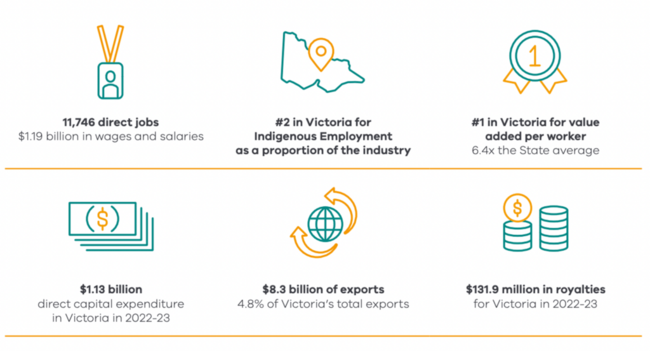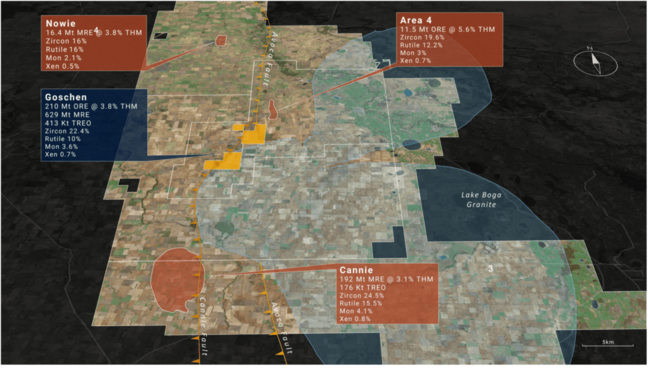Victorian critical minerals roadmap puts rare earth projects on the right track
Victoria’s new roadmap has been welcomed by mineral sands and rare earths companies looking to bring critical new supply sources online.

Stockhead
Don't miss out on the headlines from Stockhead. Followed categories will be added to My News.
Victoria keen to develop upstream and downstream critical minerals sector
State’s new roadmap set to streamline project approvals
Move welcomed by mineral sands and rare earths stock VHM
Late last year the Victorian State Government released a new critical minerals roadmap with the goal of developing the state’s resources – specifically titanium, zirconium and associated rare earths in mineral sand deposits.
And with the demand for these minerals growing rapidly for wind turbines, electric vehicles and rechargeable batteries, the state is well positioned to benefit.
The International Energy Agency estimates that achieving global net-zero targets will require mining six times more minerals by 2040 than what was produced in 2020.
That equates to around US$1.7 trillion in global mining investment and over 3 billion tonnes of metals needed – and the Victorian State Government is keen to both take climate action and grab itself a nice slice of the critical minerals pie.
“Victoria is home to world-class deposits of critical minerals, vital for our transition to a net-zero future,” Minister for Climate Action, Minister for Energy and Resources, and Minister for the State Electricity Commission Lily D'Ambrosio said.
“We have some of the largest global reserves of ilmenite, rutile, and zircon, placing us in a prime position to meet the surging demand for critical minerals needed to deliver renewable energy targets in Australia and internationally.
“This demand is expected to grow sixfold by 2040.”
As part of the roadmap, the Victorian Critical Minerals Coordination Office will be established within Resources Victoria to help to reduce project approval timelines.
Critical minerals priority development zones will also be defined, so that industry and communities can better understand areas with the highest likelihood of developing successful critical minerals operations.
Those operations are set to play an even larger role in regional economies, with mining already supporting over 7400 jobs across the state and delivering more economic value per worker than any other industry.
“The development of a Victorian critical minerals industry will bring further economic and social advantages to Victoria over the decades to come, creating in particular economic development opportunities and long-term, highly-skilled jobs within regional communities,” Minister D’Ambrosio said.
“But our compact size is also an advantage.
“With easy access to infrastructure, skilled workers, and services, we can create a seamless mine-to-manufacturing supply chain that captures the full value of our resources.
“By investing in critical minerals, we’re not just building an industry—we’re shaping a prosperous, sustainable future for all Victorians, with lasting social and economic benefits for our regional communities and Traditional Owners.”

Mineral sands opportunities in focus
The state government sees the development of mineral sands projects as significant opportunities for local economies, with preliminary economic modelling estimating the industry in northwest Victoria could support around 2000 additional jobs if the most advanced mineral sands projects move to production.
This could increase to 7000 additional jobs if more of the State's mineral sands resources are developed.
The value of known deposits in the Murray Basin (which covers large parts of Victoria, NSW and South Australia) was estimated by the Commonwealth Scientific and Industrial Research Organisation in 2014 at approximately $200 billion, with almost 85% located in Victoria.
The state government also wants to keep as much of the processing in Victoria as possible, with the roadmap investigating downstream production opportunities in processing critical minerals and manufacturing components for market.
Rare earths and mineral sands explorer VHM (ASX:VHM) has welcomed the roadmap, with the company progressing its Goschen project towards a final investment decision and first production in 2026.
The project currently has an overall resource of 892.1Mt grading 2.7% total heavy minerals including an ore reserve of 210Mt at 3.8% THM and contained total rare earth oxides of 413,107t.
A pilot-scale hydromet plant has already been successful in producing a high-purity mixed rare earth carbonate with 97% recovery of critical magnet rare earths neodymium and praseodymium, along with 92% recovery of dysprosium and 94% of terbium.
VHM CEO and executive director Ron Douglas said this new roadmap is a major step in the right direction for the Victorian mining industry.
It’s also another positive stepping stone on the path towards development for the company, following the recent ministerial endorsement of the Goschen project by the State Government late last year, which significantly de-risked the project.
“It has sent a strong message to government agencies and industry that the State Government is behind development of key mining projects,” Douglas said.
“The ministerial endorsement VHM received for the Environment Effects Statement in December 2024 was the primary approval and condition required as a precedent for us to secure the mining licence and establish a work plan for the Goschen project.
“The endorsement has provided a clear signal from State Government that VHM now have the authority to develop the Goschen project.
“It also unlocks access to the finance markets and potential partners in this regard who will enable VHM to fund development of the Goschen project towards production.”

Douglas sees room for improvement in the approvals process, which could make the state a more appealing destination for mining and processing critical minerals.
“The Victorian Government has an opportunity to improve its approvals process to drive development of mining projects in the state,” he said.
“Currently, the approvals process in Victoria and the timeline to receive approvals is not as transparent as it could be.
“Improved transparency of this process would increase confidence with investors that more critical minerals projects in the state will be developed.”
Clear pathway to production
Goschen is notable for its potential to deliver a dual revenue stream of rare earths and mineral sands – including a heavy (dysprosium/terbium) and light (neodymium/praseodymium) rare earths product.
“We regard the Goschen project as more than a project, but a mineral province with a significant 210Mt of reserve and >800Mt of Resource,” Douglas said.
To hit first production next year, the plan is for a staged ramp-up, constructing the mine and processing facilities capable of processing 1.5Mtpa of rare earths and mineral sands, ramping up to the approved 5Mtpa project over a three-year period using production cashflows.
Other ASX stocks on the Victorian map
Astron holds the Donald rare earths and minerals sands project in Victoria, which hosts 309Mt of mineral sands – 85% of which are in the proven reserves category. Donald holds 1.6Mt of rare earth oxides equivalent metal.
Phase 1 of the project has a nominal mine life of 41 years (Phase 2 extends this to 58 years), with the project sitting on a granted mining licence with an approved Victorian Government Environmental Effects Statement.
The expectation is for a development decision to be made in H1 2025, subject to funding and work plan approvals.
ATR also recently entered into a joint venture with US critical minerals company Energy Fuels to earn a 49% interest by funding the first A$183 million of project equity.
It’s a sweet deal, as this amount will largely underpin the full equity requirements of Donald, and Energy Fuels will purchase 100% of the project’s rare earths elements concentrate product, at market prices, for the life of the project, to be processed at its White Mesa mill in Utah, USA.
Astron has the option to purchase up to 100% of the zircon and titanium dioxide heavy mineral concentrate for processing by third-party mineral separation plants, or at its own mineral separation plant at Yingkou in China.
At the company’s AGM in December, chairman George Lloyd said the JV is “the most significant step the company has taken towards realising its ambition to become a major participant in the global mineral sands and rare earths markets.”
ACDC has the Goschen Central project where an indicated resource was increased in early December 2024 by over 60% from 130Mt to 210Mt.
The grade was increased by 18% to 2.3% THM and the TREO grade increased by over 13% to 684ppm.
The company also welcomed the new roadmap, particularly for streamlining the environmental effects statement for its Goschen Central project.
“The critical minerals roadmap shows the commitment to enabling the development of these key projects, whilst ensuring high environment management standards are maintained,” CEO Tom Davidson said last month.
“The approval of both ... WIM Resources’ Avonbank and VHM’s Goschen projects, which are similar to ACDC Metals’ assets, provides confidence that WIM-style heavy mineral sand projects have a permissible pathway, that has been reviewed and interrogated by an independent panel and approved by the Government.
“The Victorian Government has shown that it will play it’s part and endeavour to become a global leader in the supplying of critical minerals to support the decarbonisatoon and energy transition.”
At Stockhead, we tell it like it is. While VHM is a Stockhead advertiser, it did not sponsor this article.
Originally published as Victorian critical minerals roadmap puts rare earth projects on the right track


